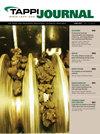纸浆和造纸厂:最初的生物炼制厂-过去的表现和未来机会的限制
IF 0.6
4区 农林科学
Q4 MATERIALS SCIENCE, PAPER & WOOD
引用次数: 0
摘要
自从汤姆林森回收锅炉发明以来,纸浆厂一直是生物精炼厂。不幸的是,造纸业在向公众解释这一概念方面做得很差。几十年来,纸浆厂生产了许多日常使用的生物制品,新产品也经常被开发出来。在过去的几十年里,现代研究的重点是通过提高产能、开发增值产品和液体运输燃料来提高纸浆和造纸厂的产品产量,以提高造纸厂的盈利能力。其中一些努力,通常被称为现代生物精炼厂,过于关注产品开发,而忽视了操作和工艺现实,这些现实限制了纸浆和造纸厂从目前有限数量的生物产品生产到这些增值产品的经济规模生产的转变。在本文中,讨论了其中的一些限制。此外,还有一些供应链、营销、产品质量和经济现实限制了这些将纸浆厂批发转化为多产品现代生物精炼厂的价值潜力。最后,纸浆和造纸工业的保守性质和资本密集度为向现代生物炼制概念的转变提供了一个困难的障碍。对这些问题也进行了审查。本文章由计算机程序翻译,如有差异,请以英文原文为准。
Pulp and paper mills: The original biorefineries — past performance and limitations to future opportunities
Pulp mills have been biorefineries since the invention of the Tomlinson recovery boiler. Unfortunately, the paper industry has done a poor job explaining that concept to the general public. A number of bioproducts in everyday use have been produced by pulp mills for several decades, and new products are routinely being developed. Modern research efforts over the last couple of decades have focused on producing even more products from pulp and paper mills through capacity enhancement and the development of value-added products and liquid transportation fuels to enhance paper mill profitability. Some of these efforts, often referred to as modern biorefineries, have focused so heavily on product development that they have ignored operating and process realities that limit the transformation of pulp and paper mills from the current limited number of bioproducts produced today to economic scale production of these value-added products. In this paper, several of these limitations are addressed. In addition, there are several supply chain, marketing, product quality, and economic realities limiting the value potential for these wholesale conversions of pulp mills into multiproduct modern biorefineries. Finally, the conservative nature and capital intensity of the pulp and paper industries provide a difficult hurdle for conversion to the modern biorefinery concept. These issues are also reviewed.
求助全文
通过发布文献求助,成功后即可免费获取论文全文。
去求助
来源期刊

Tappi Journal
工程技术-材料科学:纸与木材
CiteScore
1.30
自引率
16.70%
发文量
59
审稿时长
6-12 weeks
期刊介绍:
An internationally recognized technical publication for over 60 years, TAPPI Journal (TJ) publishes the latest and most relevant research on the forest products and related industries. A stringent peer-review process and distinguished editorial board of academic and industry experts set TAPPI Journal apart as a reliable source for impactful basic and applied research and technical reviews.
Available at no charge to TAPPI members, each issue of TAPPI Journal features research in pulp, paper, packaging, tissue, nonwovens, converting, bioenergy, nanotechnology or other innovative cellulosic-based products and technologies. Publishing in TAPPI Journal delivers your research to a global audience of colleagues, peers and employers.
 求助内容:
求助内容: 应助结果提醒方式:
应助结果提醒方式:


